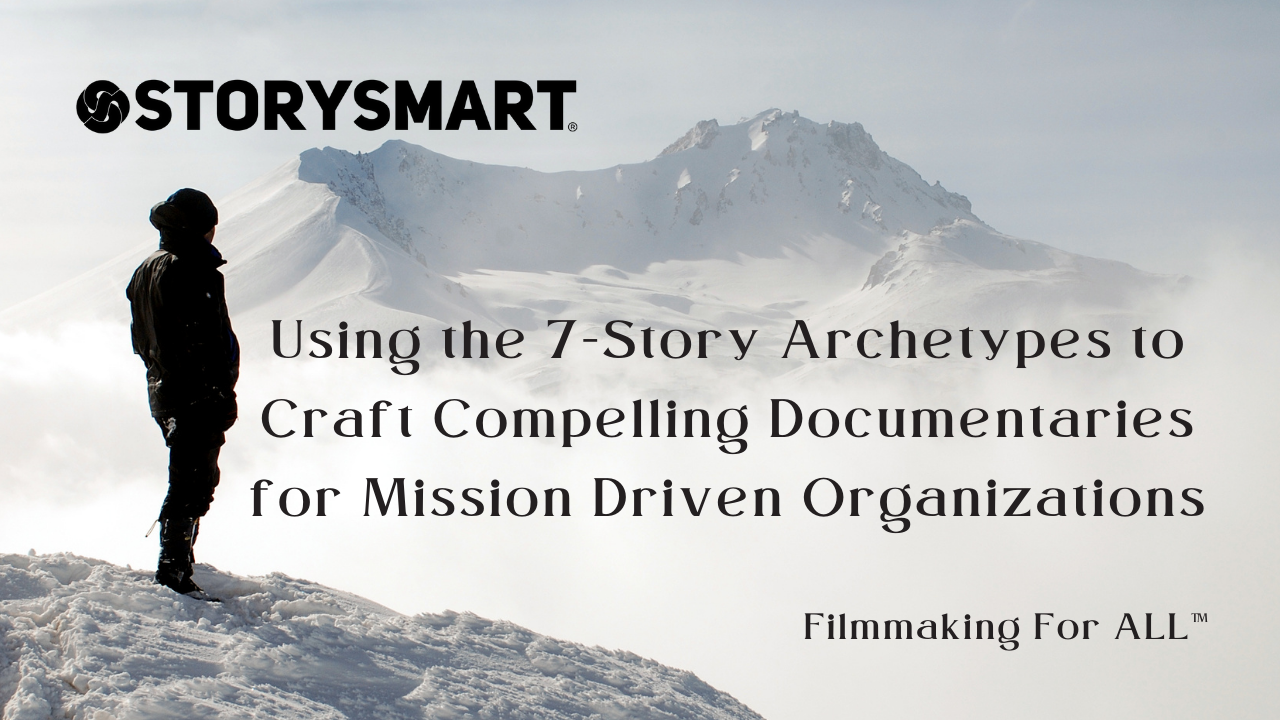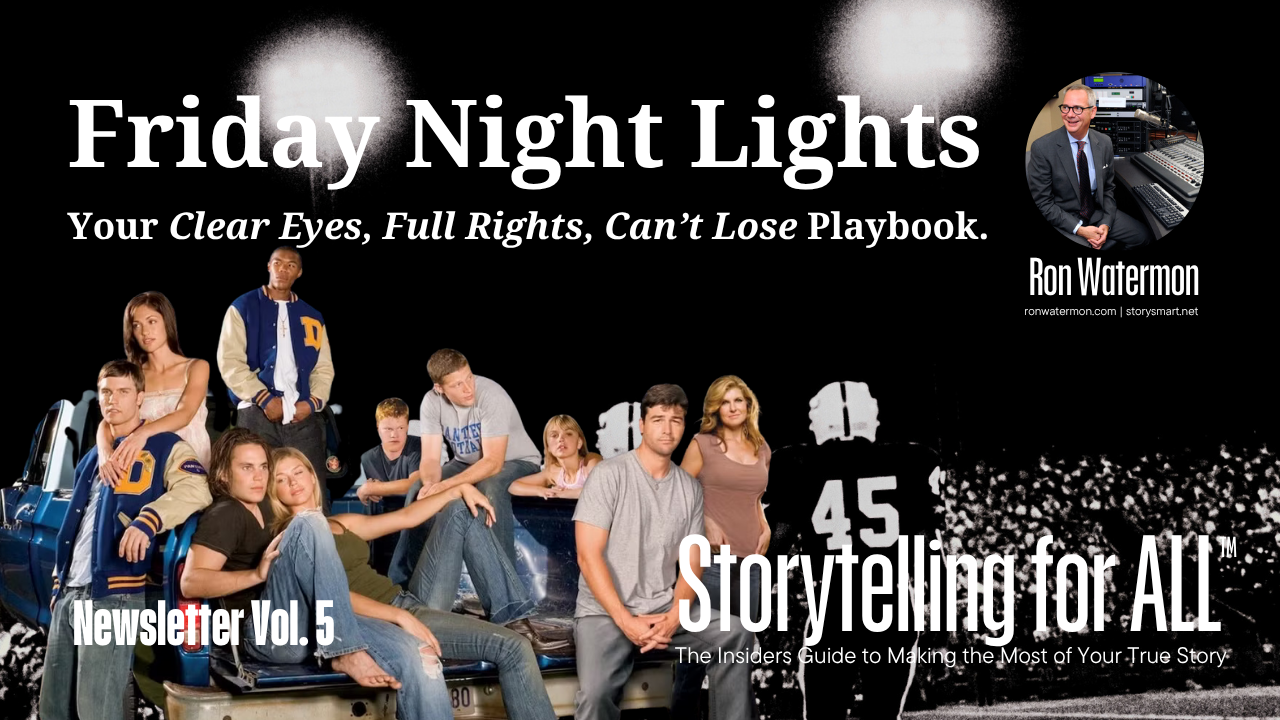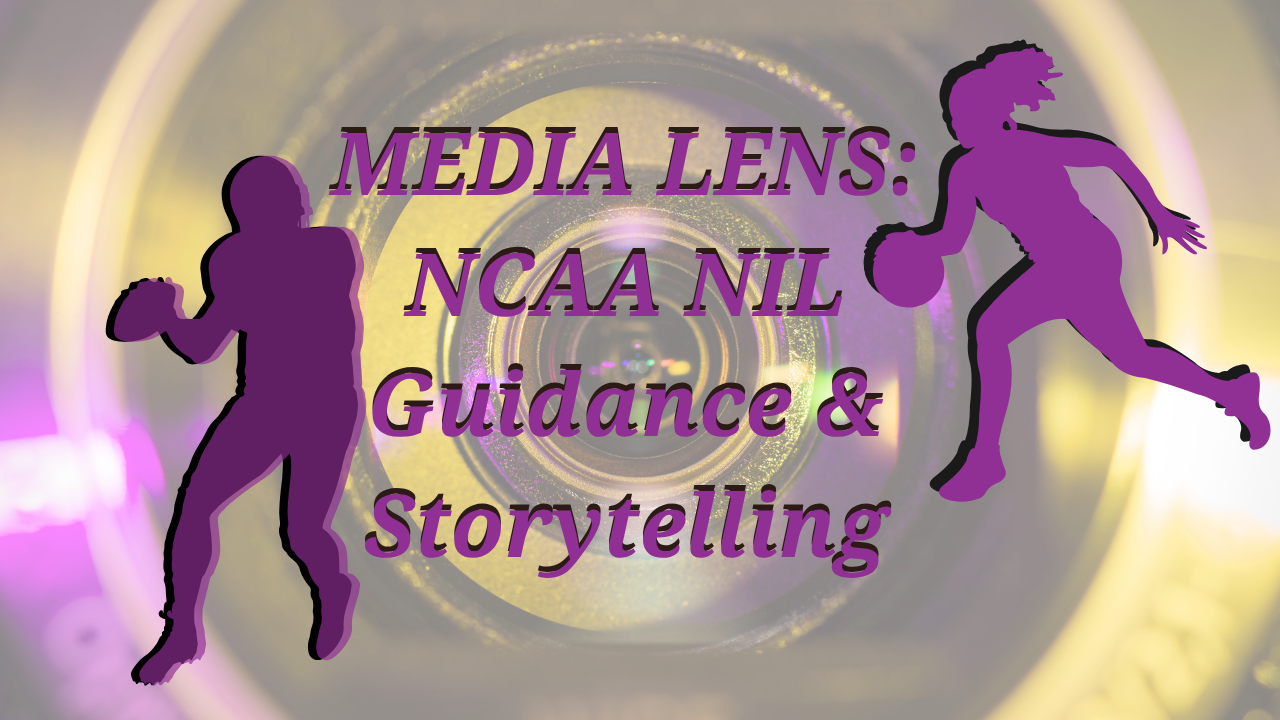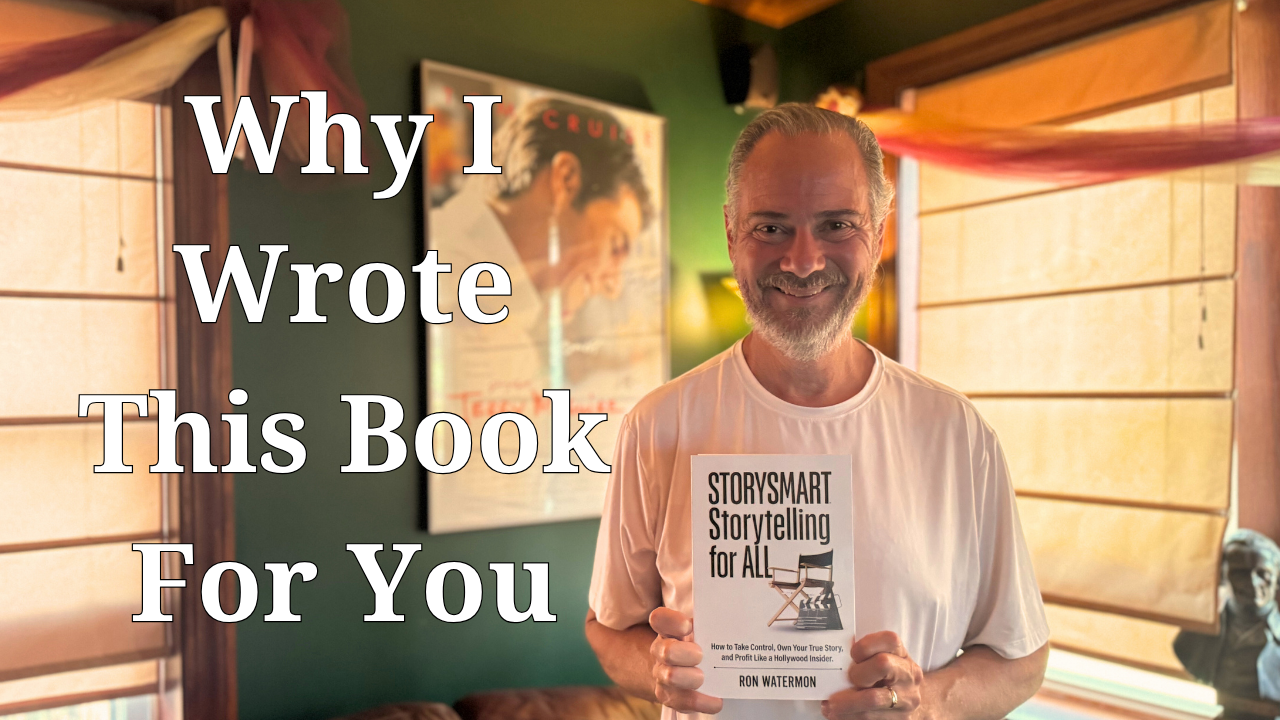Using the 7 Story Archetypes to Craft Compelling Documentaries for Non-Profits
Why A Topic Is Not A Story

St. Louis, MO – June 15, 2024 - In the realm of documentary filmmaking, there is a significant distinction between simply presenting a topic and telling a compelling story.
As Michael Moore says, "Don’t make a documentary—make a movie!"
This mindset shifts the focus from mere information dissemination to engaging and inspiring storytelling. For non-profit organizations aiming to amplify their mission through documentary films, utilizing the 7 story archetypes can transform a dry topic into a powerful narrative that captivates and moves audiences to action.
Why a Topic Is Not a Story
A topic, such as climate change, poverty, or animal rights, is merely the subject matter. It provides the context but not the narrative arc that keeps viewers engaged. A story, on the other hand, is an organized series of events that involves characters, conflict, and resolution. It is this story that resonates with audiences, not the topic alone.
The biggest mistake many documentary filmmakers make is setting out to make a documentary film without a clear idea of the story they want to tell. They simply pick up a camera and start doing interviews fishing for a story. They often end up with hundreds of hours of footage they spend months or years going through to pull out a story. In the end, only a fraction of what they gathered ends up in their final film.
Documentary films should not be fishing expeditions where filmmakers wander aimlessly hoping to find a narrative through journalistic interviews. Instead, they must be well-planned efforts to tell a compelling story in an entertaining way that can move an audience, even if they initially know or care nothing about the topic.
A good story will draw in an audience that knows nothing about a topic. A great story will reach their heart and move them to action, which is the primary reason a mission-driven organization should absolutely invest in filmmaking in the first place.
The Origins and Importance of the 7 Story Archetypes
The 7 story archetypes come from Christopher Booker’s seminal work , The Seven Basic Plots: Why We Tell Stories . Booker identifies these archetypes as fundamental narrative patterns that have been used across cultures and time periods. Each archetype taps into universal human experiences and emotions, making them powerful tools for storytelling.
By identifying which archetype best suits your documentary early in the production process, filmmakers can focus their efforts on capturing the right footage, avoiding the waste of time and resources on irrelevant material. This targeted approach ensures a more coherent and engaging final product.
The 7 Story Archetypes
Here’s how non-profits can leverage the 7 story archetypes to craft impactful documentaries:
1. Overcoming the Monster
Definition: A protagonist faces a great evil or monstrous force and ultimately overcomes it.
Example: The Ivory Game (2016)
Application (story map):
1. Identify the Monster: In your documentary, the "monster" could be a systemic issue like illegal wildlife trafficking, a corrupt corporation, or a devastating disease.
2. Hero's Journey: Highlight the efforts of individuals or groups battling against this force.
3. Set the Stakes: Show what is at risk if the monster is not defeated.
4. Resolution: Document the ultimate triumph over the monster, inspiring viewers with a message of hope and resilience.
For a non-profit focused on wildlife conservation, a documentary about the fight against poaching can transform the abstract issue of animal endangerment into a gripping narrative of survival and heroism.
2. Rags to Riches
Definition: The protagonist rises from a lowly position to greatness.
Example: Man on Wire (2008)
Application (story map):
1. Transformation: Document an individual's journey from humble beginnings to significant achievement, emphasizing their perseverance and talent.
2. Challenges: Showcase the obstacles they overcome and the pivotal moments that lead to their success.
3. Inspiration: End with the protagonist achieving their goal, providing a powerful message of hope and determination.
A non-profit working in education might tell the story of a disadvantaged student who, through scholarship programs, rises to become a leader in their field, thus illustrating the transformative power of education.
3. The Quest
Definition: The protagonist and companions set out to acquire an important object or to get to a specific location, facing many obstacles along the way.
Example: The Rescue (2021)
Application (story map):
1. Clear Goal: Define a mission or objective that the characters are striving to achieve.
2. Journey: Document the steps taken to reach this goal, including the challenges and allies met along the way.
3. Obstacles: Highlight the various hurdles that must be overcome.
4. Resolution: Conclude with the successful completion of the quest, providing a sense of achievement and purpose.
For a non-profit focused on environmental conservation, a quest narrative might follow a team of scientists and activists working to save an endangered ecosystem, illustrating their dedication and the stakes involved.
4. Voyage and Return
Definition: The protagonist goes to a strange land and, after overcoming the threats it poses to them, they return with nothing but their experience.
Example: Into the Inferno (2016)
Application (story map):
1. Voyage: Take the audience on a journey to an unfamiliar place or situation.
2. Strangeness: Emphasize the challenges and discoveries made in this new environment.
3. Return: Show the protagonist’s return and how the experience has changed them.
4. Impact: Highlight the lessons learned and their broader implications.
A non-profit working in disaster relief might document the journey of volunteers to a disaster-stricken area, showcasing their experiences and the impact of their work both on the affected community and themselves.
5. Comedy
Definition: Light and humorous character with a happy or cheerful ending; a story that hinges on a misunderstanding or mistaken identity.
Example: The King of Kong: A Fistful of Quarters (2007)
Application (story map):
1. Humorous Elements: Focus on the lighter, more amusing aspects of the story or characters.
2. Misunderstandings: Document situations that lead to humorous confusion or conflict.
3. Resolution: Ensure the story resolves in a light-hearted and satisfying way.
A non-profit focused on community building might create a documentary about a quirky local event or tradition, using humor to highlight the community’s unique character and the importance of cultural heritage.
6. Tragedy
Definition: The protagonist is a hero with one major flaw or a great mistake which is their undoing.
Example: Amy (2015)
Application (story map):
1. Tragic Hero: Center the story around a protagonist with a fatal flaw or who makes a grave mistake.
2. Downfall: Document the events leading to their downfall.
3. Consequences: Highlight the impact of the tragedy on the individual and others.
4. Reflection: Use the story to evoke empathy and prompt reflection on broader social issues.
A non-profit addressing substance abuse might tell the story of a talented individual whose life is derailed by addiction, using their narrative to underscore the need for better support systems and awareness.
7. Rebirth
Definition: An event forces the main character to change their ways and often become a better individual.
Example: The Work (2017)
Application (story map):
1. Transformation Trigger: Identify the event or series of events that lead to the protagonist’s transformation.
2. Growth: Document the process of change and self-realization.
3. Renewal: Conclude with the protagonist’s rebirth, emphasizing their new outlook and the impact on their life.
A non-profit focused on criminal justice reform might document the journey of a former inmate who, through rehabilitation programs, turns their life around and contributes positively to society.
Michael Moore's Insight: Make a Movie, Not a Sermon
Michael Moore emphasizes the importance of storytelling in documentaries: “ If you want to make a political speech, you can join a party, you can hold a rally. If you want to give a sermon, you can go to the seminary, you can be a preacher. If you want to give a lecture, you can be a teacher. But you’ve chosen to be filmmakers. So make a movie. ”
This underscores the idea that documentaries should be crafted as films with strong narratives that engage audiences emotionally and intellectually.
Moore also points out that documentaries should not feel like a “ college lecture ” or “ medicine .” They should entertain and inspire, not just inform.
By using the 7 story archetypes, filmmakers can ensure their documentaries are compelling and accessible, drawing in audiences who might otherwise be uninterested in the topic.
Conclusion: Turning Topics into Stories
For non-profit organizations, the challenge lies in turning important but often dry topics into engaging stories that resonate with a broad audience. By applying the 7 story archetypes, filmmakers can craft narratives that not only inform but also entertain and inspire action. Remember, a great story has the power to move people, regardless of their initial interest in the topic. Embrace the art of storytelling, and your documentary can become a powerful tool for change.
About STORYSMART®
Nothing is more enduring than a beautiful film that brings a story alive on screen and in our hearts. Great stories demand nothing less than cinematic Hollywood storytelling. STORYSMART® specializes in helping mission-driven organizations and public figures make the most of their story using a proprietary approach that blends Hollywood cinematic storytelling with museum-like collection curation and story-focused brand licensing.
STORYSMART® redefines Hollywood production by partnering with clients to develop their story into a film, allowing them to control their IP rights and benefit financially as their story is produced by the best filmmakers and storytellers.
STORYSMART® offers a range of services from story preservation digital archive services like those used by Oprah Winfrey, Bon Jovi and Billy Graham, to story development, screenwriting, licensing, and professional documentary filmmaking.
STORYSMART® is ideal for clients interested in controlling and monetizing their own storytelling through story-based media production, publishing, and merchandising.
Learn more about our customized white glove approach and book your FREE CONFIDENTIAL consultationat storysmart.net
Filmmaking For ALL™ My Own Story™ Storytelling For ALL™











